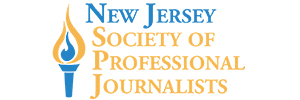In response to a confrontation that took place Aug. 3 at a newsworthy event in New Brunswick, where a private security guard took a journalist’s camera and later grabbed him in the hotel lobby and led him to the street, the New Jersey Society of Professional Journalists (NJ-SPJ) believes it is essential to remind the organizers of public events about the importance of observing legal and professional protocols on which all journalists depend for their safety and livelihood.
The events of Aug. 3 involve a speech by CNN journalist April Ryan at the 4th Annual NJ Parents Summit, an event to which public registrants had been invited. During Ryan’s speech, a man identified as a bodyguard assigned to Ryan took down the tripod from which Charlie Kratovil, the founder and editor of New Brunswick Today, had been filming, seized his camera, and later physically removed Kratovil from the venue.
Kratovil had been invited to cover the event by a public-relations firm working with the organizers, had gone through the registration system and RSVP’d his attendance, did not conceal his video-recording activity, and had no outward indication that videography was prohibited in the venue. (Journalists had been freely admitted to cover other events during the Summit, including shooting video.)
Details of the specific event are disputed, and may be sorted out in the coming weeks by the legal system, as Kratovil has stated that he will press assault charges. Nevertheless, the larger issue of journalists’ ability to safely cover events of public interest and importance is a recurring one of great importance to the SPJ and its members.
As a first principle, it is never under any circumstances permissible for a person aggrieved at being photographed or videotaped to lay hands on the journalist, or attempt to take away the journalist’s equipment. This is a bright-line rule from which all journalists benefit, and which must be observed and enforced rigorously. Even in the event of a trespass (and Kratovil, a registered guest, was not a trespasser), the only proper recourse is to notify law enforcement, not resort to “self-help.”
Moreover, “ground rules” about the use of recording equipment at events to which members of the public are invited should be clearly spelled out, in advance, to all attendees. To the extent that recording is to be restricted, such restrictions should be uniformly enforced — or unenforced — among all attendees, regardless of their media affiliation.
While journalists may have no special rights superior to members of the public, they do not have fewer rights than others. A no-photography policy should apply to everyone. Nor should the perceived viewpoint of a news organization be regarded as grounds to deny admittance to a member of the media; people who make news do not have a license to dictate how and by whom they are covered. Those who believe they have been unfairly portrayed have the remedy of counter-speech, or if warranted, resort to civil legal remedies.
When an event is made accessible to public registrants, attendees inevitably will have, and will wish to use, personal recording devices. The SPJ of New Jersey encourages event organizers and speakers, wherever possible, to accommodate the journalistic recording of presentations of public interest, mindful that a verbatim recording is the most accurate representation of what was said, and that the lack of a verbatim recording will in no way prevent amateur “tweeters” from publishing after-the-fact recollections of varying trustworthiness.
Clarity about “the rules’’ serves everyone, regardless of who they are.


Be the first to comment on "Reminders: Red lines in Journalism"